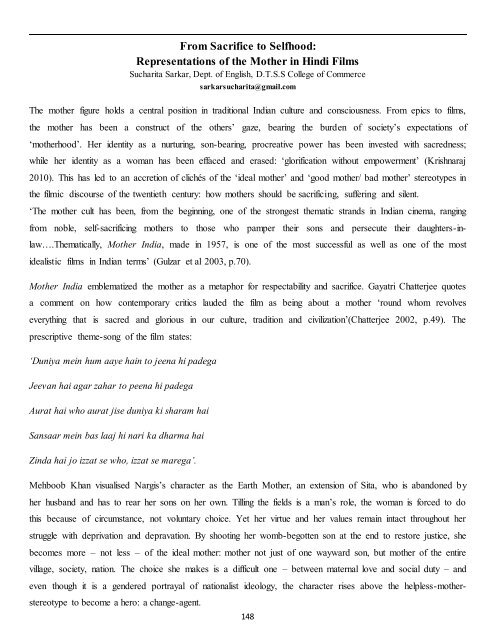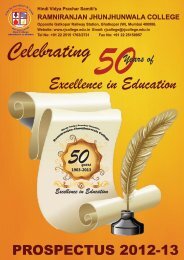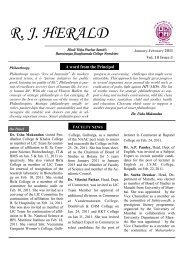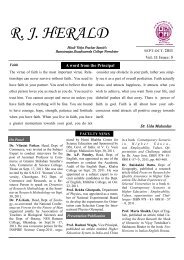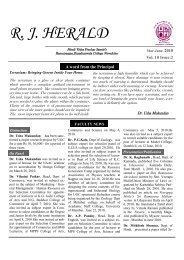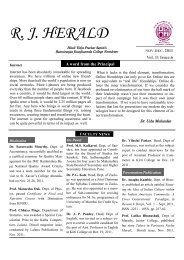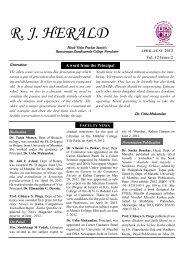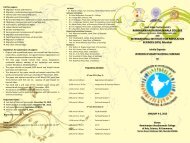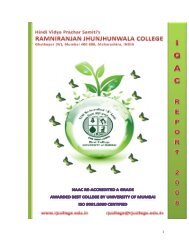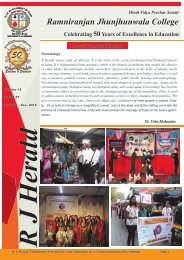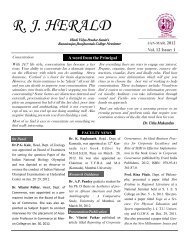ISBN 978-81-925489-2-0 - ramniranjan jhunjhunwala college
ISBN 978-81-925489-2-0 - ramniranjan jhunjhunwala college
ISBN 978-81-925489-2-0 - ramniranjan jhunjhunwala college
You also want an ePaper? Increase the reach of your titles
YUMPU automatically turns print PDFs into web optimized ePapers that Google loves.
From Sacrifice to Selfhood:<br />
Representations of the Mother in Hindi Films<br />
Sucharita Sarkar, Dept. of English, D.T.S.S College of Commerce<br />
sarkarsucharita@gmail.com<br />
The mother figure holds a central position in traditional Indian culture and consciousness. From epics to films,<br />
the mother has been a construct of the others’ gaze, bearing the burden of society’s expectations of<br />
‘motherhood’. Her identity as a nurturing, son-bearing, procreative power has been invested with sacredness;<br />
while her identity as a woman has been effaced and erased: ‘glorification without empowerment’ (Krishnaraj<br />
2010). This has led to an accretion of clichés of the ‘ideal mother’ and ‘good mother/ bad mother’ stereotypes in<br />
the filmic discourse of the twentieth century: how mothers should be sacrificing, suffering and silent.<br />
‘The mother cult has been, from the beginning, one of the strongest thematic strands in Indian cinema, ranging<br />
from noble, self-sacrificing mothers to those who pamper their sons and persecute their daughters-inlaw….Thematically,<br />
Mother India, made in 1957, is one of the most successful as well as one of the most<br />
idealistic films in Indian terms’ (Gulzar et al 2003, p.70).<br />
Mother India emblematized the mother as a metaphor for respectability and sacrifice. Gayatri Chatterjee quotes<br />
a comment on how contemporary critics lauded the film as being about a mother ‘round whom revolves<br />
everything that is sacred and glorious in our culture, tradition and civilization’(Chatterjee 2002, p.49). The<br />
prescriptive theme-song of the film states:<br />
‘Duniya mein hum aaye hain to jeena hi padega<br />
Jeevan hai agar zahar to peena hi padega<br />
Aurat hai who aurat jise duniya ki sharam hai<br />
Sansaar mein bas laaj hi nari ka dharma hai<br />
Zinda hai jo izzat se who, izzat se marega’.<br />
Mehboob Khan visualised Nargis’s character as the Earth Mother, an extension of Sita, who is abandoned by<br />
her husband and has to rear her sons on her own. Tilling the fields is a man’s role, the woman is forced to do<br />
this because of circumstance, not voluntary choice. Yet her virtue and her values remain intact throughout her<br />
struggle with deprivation and depravation. By shooting her womb-begotten son at the end to restore justice, she<br />
becomes more – not less – of the ideal mother: mother not just of one wayward son, but mother of the entire<br />
village, society, nation. The choice she makes is a difficult one – between maternal love and social duty – and<br />
even though it is a gendered portrayal of nationalist ideology, the character rises above the helpless-motherstereotype<br />
to become a hero: a change-agent.<br />
148


